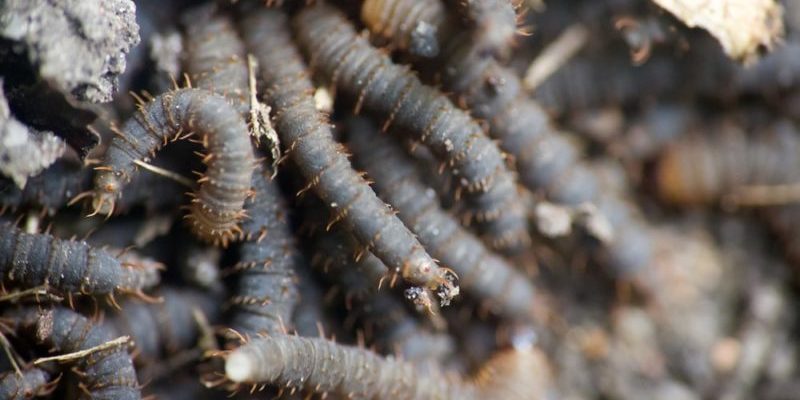The annelids (from Latin annelum meaning “rings”) are vermiform (worm-shaped) invertebrate animals that have a soft body segmented into rings. For example: the earthworm, the fireworm or the leech.
The size of annelids can vary from a millimeter to more than a meter and are organisms that inhabit aquatic, marine and freshwater, and terrestrial ecosystems.
Annelids are animals with two-sided symmetry they have no skeleton. The rings that make up your body are known as “metamers” and are repeated throughout the length of your body. Some species have the body covered with setae, filaments that facilitate locomotion.

types of annelids
Annelids can be classified into:
- Hirudines. They are annelids that live in fresh water, although there are some terrestrial and marine species. They are popularly known as leeches and they are animals that do not have setae, they have suckers, they are hermaphrodites and they are ectoparasites or feed on vertebrates. For example: the medicinal leech.
- Oligochaetes. They are mostly terrestrial annelids that live in sediments and have few setae, have clitellum (ring-shaped glandular structure) and are hermaphroditic. For example: earthworms.
- polychaetes. They are annelids that are characterized by having an elongated and thin body covered with setae and constitute the most numerous and primitive group of annelids. They are mostly present in the aquatic environment (especially in salt water) and feed on sediments, other marine animals or plants such as algae. For example: the sea mouse
characteristics of annelids
- Anatomy. They are soft-bodied tryblastic animals that are worm-shaped (although not all worms are annelids) with a segmented body consisting of a head, trunk, and anus. They have a coelom with segments (internal cavity in which organs and tissues are suspended) and bristles on the surface that facilitate locomotion.
- Locomotion. They do not have legs, so they move using setae, which are bristle-like structures along the surface of the body. Another way to move is by peristalsis, that is, through waves generated by the body itself by expansion and contraction.
- Breathing. They breathe by cutaneous respiration, that is, through the skin. Some aquatic species developed respiration through gills.
- Circulatory system. They have a closed circulatory system with hearts and blood vessels.
- Reproduction. They can be played through:
- sexual reproduction. They can be hermaphrodites, this means that they have both male and female reproductive organs; or have separate sexes and, in that case, the eggs are laid by the female and fertilized by the male.
- Asexual reproduction. The organism sheds the last part of its body and thus generates an independent being with identical genetic material.
- Habitat and feeding. They can live both in the aquatic and terrestrial environment or be hosts (parasites) within another organism.
- aquatic annelids. They live in the sediment at the bottom of the river or sea and feed on microscopic organisms such as plankton. Species such as the leech can feed on blood because they are external parasites.
- terrestrial annelids. They inhabit wetlands and feed on sediments and nutrients found in the soil.
- parasitic annelids or hosts. They lodge in some system or organ and feed on it.
examples of annelids
| Alitta virens | blood worm | sea duster |
| arenicola marina | giant tube worm | sea mouse |
| Capitella capitata | korean earthworm | sabellastarte indicates |
| Wanderers | common earthworm | Leech |
| christmas tree worm | California red worm | horse leech |
| slime worm | tiger worm | Spionida |
| fire worm | Nereis | tomopteriskils |
